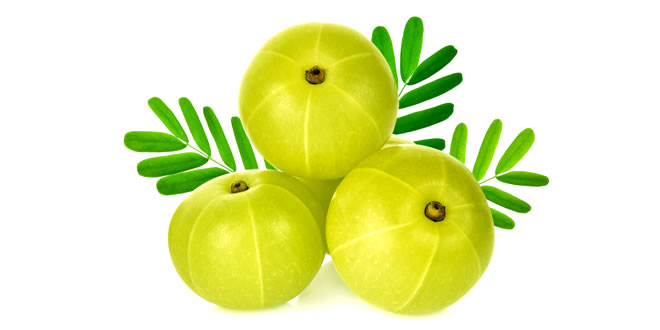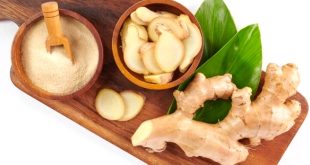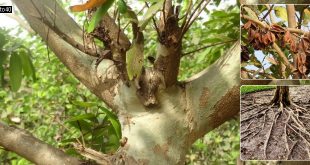| Family Name: | Euphorbiaceae |
| Botanical Name: | Emblica Officinalis (Phyllanthus Emblica, Indian Gooseberry, Amla |
| Common Name: | Gooseberry, Phyllanthus Emblica, Emblica, Indian Gooseberry, Amla |
| Part Used: | Fruits |
| Habitat: | Northern and South Western India |
| Uses: | It is Aperient, Carminative, Diuretic, Aphrodasiac, Laxative, Astringent and Refrigerant. It is the richest known source of vitamin ‘C’. It is useful in anaemia, jaundice, dyspepcia, haemorrhage disorders, diabetes, asthama and bronchitis. It cures insomnia and is healthy for hair. |
Emblica Officinalis: Introduction
Emblica officinalis is a deciduous tree of the Euphorbiaceae family. It is known for its edible fruit of the same name.
Indian Gooseberry (Emblica officinalis) is a type of deciduous tree found in the Indian subcontinent that bears the fruit of the same name. Other synonymous scientific names are Amlica embillicus and Phyllanthus emblica. It belongs to the plant family euphorbiaceae. It is popularly known as Amla in Hindi. Other names are Aonla, Aola, Amalaki, Nelli, Amla-berry and Dharty.
The edible fruit is round shaped light greenish yellow with 6 vertical stripes and ripens in autumn. The fruit is bitter-sour in taste and also being more fibrous than most fruits cannot be consumed raw in vast quantities. It is taken with salt, and a glass of water taken immediately after eating a large fruit makes the water seem sweeter. It is rich source of vitamin C and the fruit is pickled and also used as a main ingredient in the Ayurvedic tonic Chyavanprash. Its extract is popularly used in inks, dyes, shampoos and hair oils.
Plant Anatomy & Harvesting:
The tree is small to medium sized, reaching 8 to 18 m in height, with a crooked trunk and spreading branches. The branchlets are glabrous or finely pubescent, 10-20 cm long, usually deciduous; the leaves simple, subsessile and closely set along branch-lets, light green, resembling pinnate leaves. The flowers are greenish-yellow. The fruit is nearly spherical, light greenish yellow, quite smooth and hard on appearance, with 6 vertical stripes or furrows.
Ripening in autumn, the berries are harvested by hand after climbing to upper branches bearing the fruits. The taste of Nepali gooseberry is sour, bitter and astringent, and is quite fibrous. In India, it is common to eat gooseberries steeped in salt water and turmeric to make the sour fruits palatable.
Traditional Uses:
In traditional Nepali medicine dried and fresh fruits of the plant are used. All parts of the plant are used in various Ayurvedic / Unani Medicine (Jawarish Amla) herbal preparations, including the fruit, seed, leaves, root, bark and flowers. According to Ayurveda, amla fruit is sour (amla) and astringent (kashaya) in taste (rasa), with sweet (madhura), bitter (tikta) and pungent (katu) secondary tastes (anurasas). Its qualities (gunas) are light (laghu) and dry (ruksha), the post-digestive effect (vipaka) is sweet (madhura), and its energy (virya) is cooling (shita).
According to Ayurveda, amla is specific to pitta due to its sweet taste and cooling energy. However, amla is thought to balance vata by virtue of its sour taste, and kapha due to its astringent taste and drying action. It may be used as a rasayana (rejuvenate) to promote longevity, and traditionally to enhance digestion (dipanapachana), treat constipation (anuloma), reduce fever (jvaraghna), purify the blood (raktaprasadana), reduce cough (kasahara), alleviate asthma (svasahara), strengthen the heart (hrdaya), benefit the eyes (chakshushya), stimulate hair growth (romasanjana), enliven the body (jivaniya), and enhance intellect (medhya). According to Unani System of Medicine the Mizaj of Amla is Sard Khushk so that it is very good remedy for Haar Amraz.
In Ayurvedic polyherbal formulations, Nepali gooseberry is a common constituent, and most notably is the primary ingredient in an ancient herbal rasayana called Chyavanprash. This formula, which contains 43 herbal ingredients as well as clarified butter, sesame oil, sugar cane juice, and honey, was first mentioned in the Charaka Samhita as a premier rasayana or rejuvenation compound.
 Kids Portal For Parents India Kids Network
Kids Portal For Parents India Kids Network





